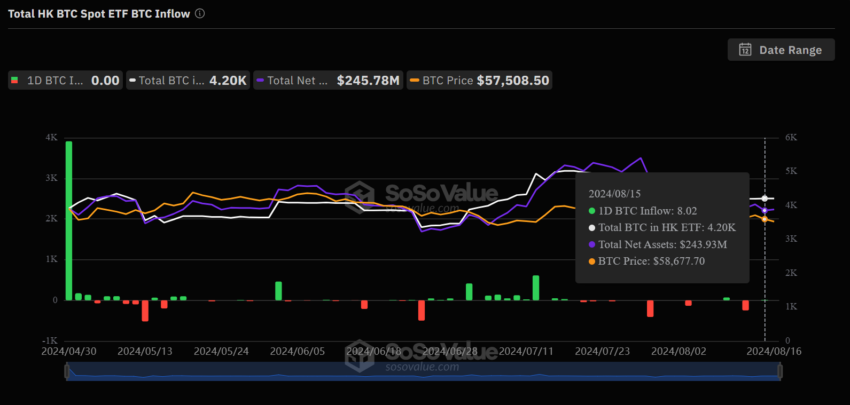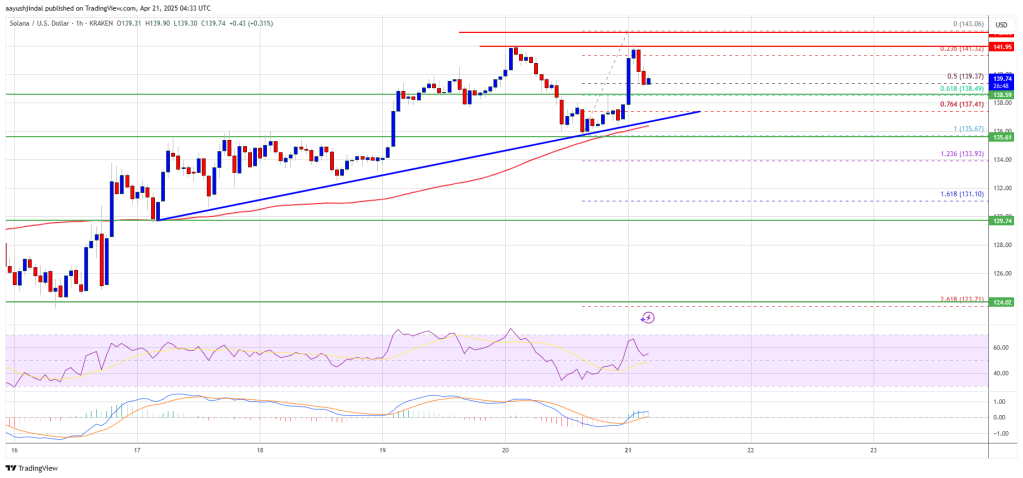Market
WLD in Malaysia, DBS Pilots Token, and More

As Asia continues to emerge as a hub for crypto innovation, significant developments are taking place across the region. Worldcoin is establishing a strong foothold in Malaysia through strategic partnerships, while Singapore’s DBS Bank is pioneering new solutions in financial management with its pilot launch of Treasury Tokens.
These advancements, alongside others in the region, highlight Asia’s growing influence in the global crypto arena.
DBS Bank Revolutionizes Liquidity Management with Treasury Tokens
On August 13, DBS, Singapore’s largest private bank, introduced DBS Treasury Tokens, a treasury and liquidity management solution developed in collaboration with Ant International. This initiative allows Ant International to manage multi-currency treasury operations on DBS’ permissioned blockchain. Moreover, it enables instant settlement and enhanced liquidity management across various markets.
Integrated with Ant International’s Whale platform, DBS’ blockchain facilitates 24/7 intragroup liquidity management, streamlining workflows and improving visibility. The platform uses blockchain technology, encryption, and AI to optimize fund movements between bank accounts, reducing settlement times from days to seconds.
“We have already seen successful use cases on our Whale platform in areas such as instant tax refund services and SME cross-border payments, and we will continue working together with industry partners and leveraging blockchain technology to enable more open and inclusive cross-border payments,” Kelvin Li, Head of Platform Tech at Ant International, explained.
Read more: What is Tokenization on Blockchain?
DBS Treasury Tokens are part of the bank’s broader strategy to leverage blockchain for financial innovation. This move draws on insights from its participation in the Monetary Authority of Singapore’s Project Orchid and Project Guardian.
Worldcoin Expands to Malaysia, Advancing Digital Credentialing
On August 16, Worldcoin and its developer, Tools for Humanity (TFH), announced a partnership with Malaysia’s MIMOS Berhad, the government’s research and development arm, and MyEG, a leading e-government services provider. This partnership aims to incorporate iris imaging technology into Malaysia’s digital infrastructure. This will enable secure and private verification of individuals, streamlining the country’s approach to digital credentials.
The announcement also outlines plans for joint orb manufacturing and the integration of World Chain with Malaysia’s National Blockchain Infrastructure. TFH will provide technical expertise to support the Orb and World App, with MYEG facilitating technical integrations and hardware deployment.
This development comes as Worldcoin continues to face scrutiny over its biometric data collection in several countries, including Hong Kong and Portugal. Additionally, some industry analysts have raised concerns about WLD, Worldcoin’s native token, particularly regarding price manipulation and questionable token unlock mechanisms.
Binance Marks Regulatory Milestone with Re-Entry into India
On August 15, Binance officially re-entered the Indian market, celebrating its successful registration with India’s Financial Intelligence Unit (FIU-IND). Binance’s re-entry into India includes implementing comprehensive anti-money laundering (AML) and combating the financing of terrorism (CFT) measures. It will also ensure enhanced security and compliance within the Virtual Digital Assets (VDA) ecosystem.
“Our registration with the FIU-IND marks an important milestone in Binance’s journey. Recognizing the vitality and potential of the Indian VDA market, this alignment with Indian regulations allows us to tailor our services for Indian users,” Richard Teng, CEO of Binance, expressed his commitment to the Indian market.
Despite this achievement, Binance might still face challenges in the region. Recently, the company received a show-cause notice from India’s Directorate General of GST Intelligence (DGGI), demanding a Goods and Services Tax payment of approximately $86 million.
South Korea’s NPS Invests in MicroStrategy Amid Bitcoin Craze
South Korea’s National Pension Service (NPS), the world’s second-largest public pension fund, recently made headlines with its $34 million investment in MicroStrategy’s shares. MicroStrategy is a company renowned for its substantial Bitcoin holdings.
MicroStrategy began aggressively acquiring Bitcoin in 2020 and has seen its stock become a favored choice for investors seeking indirect exposure to the cryptocurrency. This investment follows NPS’s purchase of 282,673 Coinbase shares in Q3 2023. The acquisition, valued at approximately $27.7 million, demonstrates NPS’s cautious but deliberate interest in gaining exposure to the crypto market.
Hong Kong’s Crypto ETFs Continue Struggling to Gain Traction
Hong Kong’s spot crypto exchange-traded funds (ETFs) have experienced varied performance. According to SoSo Value data, the Hong Kong spot Bitcoin ETF saw an outflow of 248.66 BTC on August 13, followed by a modest inflow of 8.02 BTC, with no significant movements for the rest of the week.
Read more: Why do Hong Kong Spot Crypto ETFs Matter?

The spot Ethereum ETF, on the other hand, recorded no inflows or outflows during the same period. As of August 16, the total net assets of Hong Kong’s spot Bitcoin ETFs stand at $245.78 million, while spot Ethereum ETFs have accumulated $38.13 million since their launch.
Disclaimer
In adherence to the Trust Project guidelines, BeInCrypto is committed to unbiased, transparent reporting. This news article aims to provide accurate, timely information. However, readers are advised to verify facts independently and consult with a professional before making any decisions based on this content. Please note that our Terms and Conditions, Privacy Policy, and Disclaimers have been updated.
Market
Vitalik Buterin Proposes to Replace EVM with RISC-V

Ethereum (ETH) co-founder Vitalik Buterin has proposed overhauling the blockchain’s smart contract infrastructure by replacing the Ethereum Virtual Machine (EVM) with RISC-V, a widely adopted open-source instruction set architecture.
This shift aims to address one of Ethereum’s key scaling bottlenecks by dramatically improving the efficiency and simplicity of smart contract execution.
Buterin Proposes Ditching EVM for RISC-V
The proposal was detailed in a post on the Ethereum Magicians forum. In it, Buterin suggested that smart contracts could eventually be compiled to RISC-V rather than EVM bytecode.
According to Buterin, this shift addresses long-term scalability challenges. This particularly includes keeping block production competitive and improving zero-knowledge (ZK) EVM-proof efficiency.
“It aims to greatly improve the efficiency of the Ethereum execution layer, resolving one of the primary scaling bottlenecks, and can also greatly improve the execution layer’s simplicity – in fact, it is perhaps the only way to do so,” he wrote.
Current ZK-EVM implementations spend around half of their proving cycles on EVM execution. By switching to a native RISC-V VM, Ethereum could potentially achieve up to 100x efficiency gains.
Importantly, many fundamental aspects of Ethereum’s architecture would remain unchanged, preserving continuity for developers and users. Core abstractions such as accounts, smart contract storage, ETH balances, and cross-contract calls would function exactly as they do today.
Developers would still write contracts in familiar languages like Solidity or Vyper. These would simply be compiled to RISC-V rather than EVM bytecode. Tooling and workflows would remain largely intact, ensuring a smooth transition.
Crucially, the proposal ensures backward compatibility. Existing EVM contracts will remain fully operational and interoperable with new RISC-V contracts.
Buterin outlines several potential implementation paths forward. The first would support both EVM and RISC-V smart contracts natively. The second suggests wrapping EVM contracts to run via an interpreter written in RISC-V. Thus, it would enable a full transition without breaking compatibility.
The third, more modular approach, builds on the second by formally enshrining interpreters as part of the Ethereum protocol. This would allow the EVM and the future virtual machines to be supported in a standardized way.
Buterin stated that the idea is “equally as ambitious as the beam chain effort.”
“The beam chain effort holds great promise for greatly simplifying the consensus layer of Ethereum. But for the execution layer to see similar gains, this kind of radical change may be the only viable path,” Buterin added.
For context, the Ethereum Beam Chain is a redesign of Ethereum’s consensus layer (Beacon Chain). It focuses on faster block times, faster finality, chain snarkification, and quantum resistance. The development will likely begin in 2026.
This proposal fits into Ethereum’s broader vision of modularity, simplicity, and long-term scalability. Previously, BeInCrypto reported on Buterin’s privacy-centric plans for the blockchain.
The proposal focused on integrating privacy-preserving technologies. Moreover, the Pectra upgrade is also nearing, with the launch expected on May 7.
Meanwhile, ETH continues to face market headwinds, trading at March 2023 lows. This year has been quite hard for the altcoin, as it saw a decline of 50.8%. In fact, Ethereum dominance hit a 5-year low last week.

Nonetheless, BeInCrypto data showed a slight recovery over the last 14 days. ETH rose by 6.1%. Over the past day alone, it saw modest gains of 1.7%. At the time of writing, ETH was trading at $1,639.
Disclaimer
In adherence to the Trust Project guidelines, BeInCrypto is committed to unbiased, transparent reporting. This news article aims to provide accurate, timely information. However, readers are advised to verify facts independently and consult with a professional before making any decisions based on this content. Please note that our Terms and Conditions, Privacy Policy, and Disclaimers have been updated.
Market
Solana Rallies Past Bitcoin—Momentum Tilts In Favor of SOL

Solana started a fresh increase from the $120 support zone. SOL price is now consolidating and might climb further above the $142 resistance zone.
- SOL price started a fresh increase above the $125 and $132 levels against the US Dollar.
- The price is now trading above $130 and the 100-hourly simple moving average.
- There is a connecting bullish trend line forming with support at $137 on the hourly chart of the SOL/USD pair (data source from Kraken).
- The pair could start a fresh increase if it clears the $142 resistance zone.
Solana Price Gains Over 5%
Solana price formed a base above the $120 support and started a fresh increase, like Bitcoin and Ethereum. SOL gained pace for a move above the $125 and $132 resistance levels.
The pair even spiked toward the $145 resistance zone. A high was formed at $143.06 and the price is now retreating lower. There was a move below the 23.6% Fib retracement level of the upward move from the $135 swing low to the $143 high.
Solana is now trading above $130 and the 100-hourly simple moving average. There is also a connecting bullish trend line forming with support at $137 on the hourly chart of the SOL/USD pair. The trend line is close to the 76.4% Fib retracement level of the upward move from the $135 swing low to the $143 high.
On the upside, the price is facing resistance near the $142 level. The next major resistance is near the $145 level. The main resistance could be $150. A successful close above the $150 resistance zone could set the pace for another steady increase. The next key resistance is $155. Any more gains might send the price toward the $165 level.
Pullback in SOL?
If SOL fails to rise above the $142 resistance, it could start another decline. Initial support on the downside is near the $138.50 zone. The first major support is near the $137 level and the trend line.
A break below the $137 level might send the price toward the $132 zone. If there is a close below the $132 support, the price could decline toward the $125 support in the near term.
Technical Indicators
Hourly MACD – The MACD for SOL/USD is gaining pace in the bullish zone.
Hourly Hours RSI (Relative Strength Index) – The RSI for SOL/USD is above the 50 level.
Major Support Levels – $137 and $132.
Major Resistance Levels – $142 and $145.
Market
Bitcoin Price Breakout In Progress—Momentum Builds Above Resistance

Reason to trust

Strict editorial policy that focuses on accuracy, relevance, and impartiality
Created by industry experts and meticulously reviewed
The highest standards in reporting and publishing
Strict editorial policy that focuses on accuracy, relevance, and impartiality
Morbi pretium leo et nisl aliquam mollis. Quisque arcu lorem, ultricies quis pellentesque nec, ullamcorper eu odio.
Bitcoin price is slowly moving higher above the $86,500 zone. BTC is gaining pace and might continue higher in the near term.
- Bitcoin found support at $84,200 and started a recovery wave.
- The price is trading above $85,500 and the 100 hourly Simple moving average.
- There was a break above a connecting bearish trend line with resistance at $85,000 on the hourly chart of the BTC/USD pair (data feed from Kraken).
- The pair could start another increase if it clears the $88,000 zone.
Bitcoin Price Eyes Steady Increase
Bitcoin price remained stable above the $83,200 level and started a fresh increase. BTC was able to climb above the $84,200 and $85,000 resistance levels.
There was a break above a connecting bearish trend line with resistance at $85,000 on the hourly chart of the BTC/USD pair. The bulls were able to pump the price above the $86,500 resistance. It even spiked above $87,000. A high is formed near $87,562 and the price might continue to rise unless there is a move below the 23.6% Fib retracement level of the upward move from the $84,007 swing low to the $87,562 high.
Bitcoin price is now trading above $86,500 and the 100 hourly Simple moving average. On the upside, immediate resistance is near the $87,500 level. The first key resistance is near the $88,000 level.

The next key resistance could be $88,800. A close above the $88,800 resistance might send the price further higher. In the stated case, the price could rise and test the $89,500 resistance level. Any more gains might send the price toward the $90,000 level.
Downside Correction In BTC?
If Bitcoin fails to rise above the $88,000 resistance zone, it could start a downside correction. Immediate support on the downside is near the $87,000 level. The first major support is near the $86,750 level.
The next support is now near the $86,000 zone. Any more losses might send the price toward the $85,750 support or the 50% Fib retracement level of the upward move from the $84,007 swing low to the $87,562 high in the near term. The main support sits at $84,850.
Technical indicators:
Hourly MACD – The MACD is now gaining pace in the bullish zone.
Hourly RSI (Relative Strength Index) – The RSI for BTC/USD is now above the 50 level.
Major Support Levels – $86,750, followed by $86,000.
Major Resistance Levels – $87,500 and $88,000.
-

 Market15 hours ago
Market15 hours ago1 Year After Bitcoin Halving: What’s Different This Time?
-

 Ethereum21 hours ago
Ethereum21 hours agoEthereum Consolidates In Symmetrical Triangle: Expert Predicts 17% Price Move
-

 Market19 hours ago
Market19 hours agoMELANIA Crashes to All-Time Low Amid Insiders Continued Sales
-

 Market21 hours ago
Market21 hours agoToday’s $1K XRP Bag May Become Tomorrow’s Jackpot, Crypto Founder Says
-

 Altcoin24 hours ago
Altcoin24 hours agoWhat’s Up With BTC, XRP, ETH?
-

 Market20 hours ago
Market20 hours agoCharles Schwab Plans Spot Crypto Trading Rollout in 2026
-

 Ethereum20 hours ago
Ethereum20 hours agoEthereum Enters Historic Buy Zone As Price Dips Below Key Level – Insights
-

 Market16 hours ago
Market16 hours agoVOXEL Climbs 200% After Suspected Bitget Bot Glitch






















